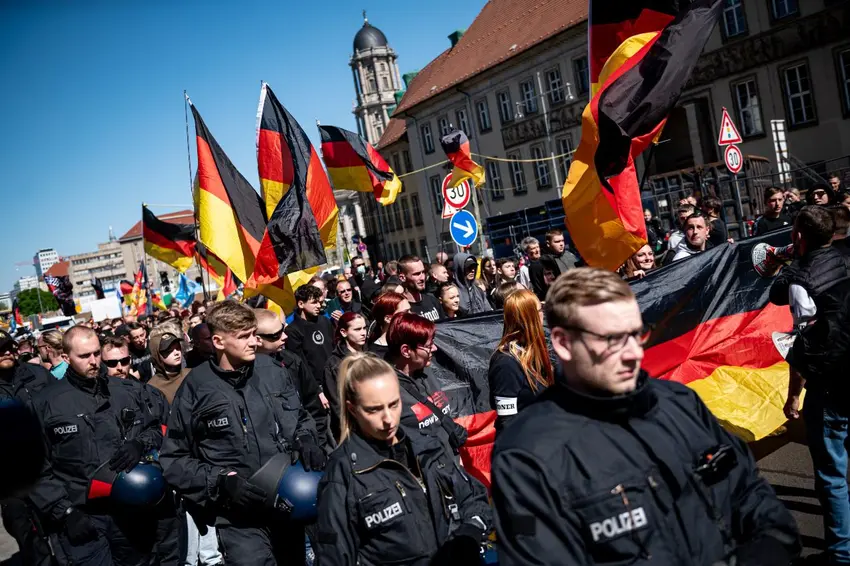Germany is grappling with a profound political moment. In recent weeks, the country has seen a surge of large-scale right-wing protests, drawing hundreds of thousands of citizens into the streets in a display of discontent that has alarmed mainstream politicians and sparked intense debate about the nation’s future.https://medschemicalsuppliers.com/en/product/buy-alpha-pvp/
This blog post will explore the catalysts behind these protests, the key players involved, and the significant questions they raise for German democracy.
The Spark: The „Remigration“ Leak
The immediate catalyst for the current wave of protests was an investigative report from the German news outlet Correctiv. Their revelation exposed a secret meeting held in Potsdam between November 2023 and January 2024, which included far-right figures from the Alternative for Germany (AfD) party, as well as neo-Nazis and wealthy conservative businesspeople.
The most shocking part of the report was the discussion of a „remigration“ master plan—a concept widely understood as a blueprint for the mass deportation of millions of immigrants, including naturalized German citizens.
This leak struck a deep nerve. For many, it evoked chilling memories of the darkest chapters of German history and made abstract far-right rhetoric feel like a tangible threat. In response, massive counter-protests under the banner „We Are the Firewall“ erupted across the country, drawing over a million participants who demonstrated in defense of democracy and diversity.
The Fuel: Underlying Grievances
While the leak was the spark, the fuel for this discontent has been building for years. Several key factors contribute to the support for the right-wing movement:
- Migration and Integration Concerns: Since the 2015 refugee crisis, Germany has accepted over a million refugees. While many communities have integrated newcomers successfully, the strain on housing, schools, and social services has been significant. A perception of cultural change and a handful of high-profile criminal incidents involving migrants have been effectively leveraged by the AfD to stoke fear and resentment.
- Economic Anxiety: Inflation, high energy costs, and a looming recession have squeezed the middle and working classes. The AfD has successfully positioned itself as the party of the „little man,“ blaming the ruling „traffic-light“ coalition (SPD, Greens, FDP) for economic hardship and channeling anger towards migrants and the European Union.
- Perceived Elite Disconnect: There is a growing sentiment, particularly in former East Germany, that the political elite in Berlin are out of touch with the concerns of ordinary citizens. The AfD’s anti-establishment rhetoric resonates strongly in these communities.
The Key Player: The Alternative for Germany (AfD)
At the center of this storm is the AfD. Founded originally as a eurosceptic party, it has morphed into a firmly far-right populist movement. While not all protesters are AfD voters, the party is the primary political beneficiary and ideological driver of the sentiments behind the demonstrations.
The AfD is currently polling in second place nationally at over 20%, and it is the most popular party in several eastern states where elections are due this year. Its strength is no longer at the fringe; it is a central force in German politics.
The Response: A Nation at a Crossroads
The response has been multifaceted:
- Civil Society: The enormous counter-protests show a strong, mobilized defense of democratic values.
- Mainstream Politics: The ruling coalition is struggling to respond. While condemning the far-right, they are under pressure to address the underlying issues of migration and economic insecurity that fuel the AfD’s rise.
- Legal Scrutiny: There are growing calls for the domestic intelligence agency to consider placing the AfD under formal surveillance as a suspected extremist group, a move that would have significant political ramifications.
What It Means: A Battle for the Soul of Germany
These protests are more than just political disagreements; they represent a fundamental battle over German identity.
- Vergangenheitsbewältigung: This German term, meaning „struggle to overcome the past,“ is central. Germans have long built their modern identity on a conscious rejection of Nazism. The rise of openly xenophobic and nationalist rhetoric forces a painful confrontation with whether those lessons are being forgotten.
- The Strength of Institutions: Germany is testing the resilience of its democratic institutions and its famed „wehrhafte Demokratie“ (defensive democracy)—the concept that the state must actively protect itself from those who seek to destroy it from within.
The Bottom Line
The right-wing protests in Germany are a symptom of deep-seated societal unease. They highlight a population fractured by issues of identity, economic stability, and trust in government.
For the world, Germany serves as a crucial case study. As a European economic powerhouse with a unique historical burden, how it navigates this surge of right-wing populism will have profound implications for the entire continent. The outcome will determine whether the mainstream can successfully address legitimate grievances without ceding ground to illiberal and undemocratic forces.
The streets of German cities are now the stage where this struggle is playing out.

